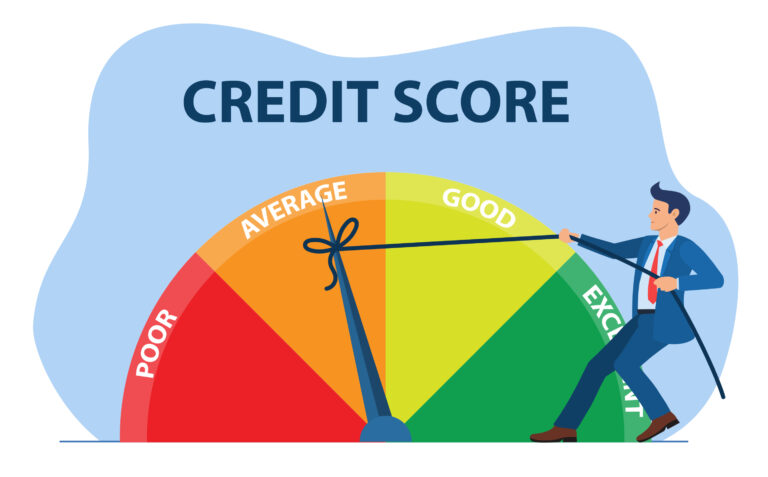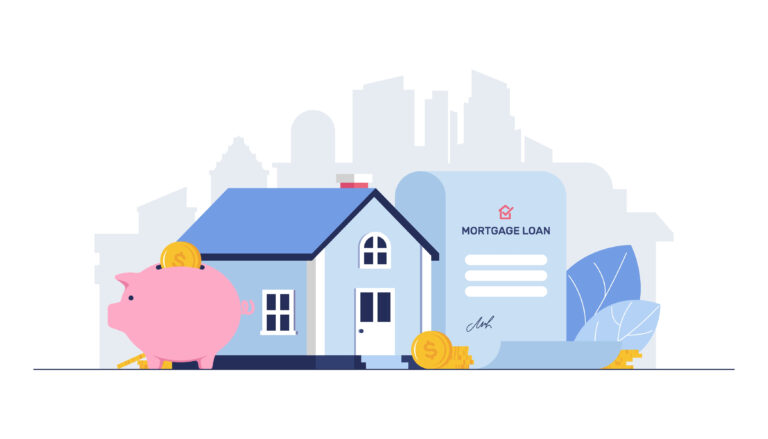Use our credit utilization calculator to estimate your current credit utilization ratio so you know where you stand — and how and where to start repairing your credit if needed.
Your credit utilization ratio is the total outstanding balance across all of your credit cards (and other revolving credit lines) vs. your total available credit limit across all those same accounts. It makes up about 30% of your credit score, which can affect loan approval, interest rates, and more. Our credit utilization calculator makes it easy to see that ratio quickly.
Credit utilization calculator
Use our credit utilization calculator to determine your credit utilization ratio. Fill in the current balance and credit limit on each of your credit cards. If you need to add more cards, just change the "Number of Credit Cards" field at the top.
How to use the calculator:
Enter your current balance and credit limit for each card.
Review your utilization per card and overall.
Use our tips below to lower your ratio and boost your score.
💡 Tip: Round up your balances when entering them — credit scoring models often use the statement balance reported by your card issuer, which can differ slightly from what you see day to day.
Disclaimer: The information provided by this calculator is for informational purposes only. It is not intended as legal, financial, investment, or tax advice, and should not be relied upon as such. Consult a licensed financial advisor or tax professional regarding your personal financial situation before making any decisions.
Why does credit usage matter? If you're using most or all of your total available credit limit, it's going to damage your credit score and make it harder to secure a new loan. Conversely, if you stay on top of payments and keep your overall credit utilization rate low, it'll be easier to get approved for new loans with better terms. Unlike other credit factors (like account age), utilization can change day to day, and you can improve it quickly, which is why checking credit utilization regularly is critical for improving your score.
What is credit utilization?
Credit utilization is one of five key metrics that credit bureaus use to assign you a credit rating. It tells you the portion of revolving credit you've used compared to the total amount of credit you have available.
Revolving credit accounts only for credit cards and personal lines of equity that are replenished as soon as the balance is paid off. This type of credit is distinct from installment credit, such as mortgage and auto loans that you make fixed payments on over time and then the line of credit closes. The lower your ratio is, the better. Lenders often see under 30% as “good” and under 10% as “excellent.”
Example:
Total credit limit: $10,000
Total credit card balances: $2,500
Credit utilization ratio = $2,500 ÷ $10,000 = 25%
How to calculate your credit utilization
You can calculate your credit utilization ratio by adding up the balances on each of your credit cards and dividing the sum by your total credit limit across those accounts.
Let's say you have three credit cards, each with a different balance and credit limit.
| Credit balance | Credit limit | |
|---|---|---|
| Card 1 | $2,200 | $2,500 |
| Card 2 | $300 | $1,500 |
| Card 3 | $0 | $1,000 |
| Total | $2,500 | $5,000 |
You can determine your credit utilization ratio using the following formula:
|
Credit utilization ratio = Total credit balance / Total credit limit
= ($2,200 + $300 + $0) / ($2,500 + $1,500 + $1,000)
= $2,500 / $5,000
= .50%
|
How does credit utilization affect your credit score?
Credit utilization accounts for about 30% of your credit score, ranking just behind your payment history. A low credit utilization ratio indicates that you borrow money responsibly and live within your means.
When evaluating a borrower's credit report, lenders typically prefer to see a credit utilization ratio of less than 30%. By keeping your credit card balances low, you may be able to secure more favorable rates when applying for a mortgage or opening a new line of credit.
Per-card vs. overall utilization
Credit scoring models look at two things:
Overall utilization: Your balances across all cards compared to your total available credit.
Per-card utilization: How much of each individual card’s limit you’re using.
💡 Why it matters: Even if your overall utilization is low, maxing out a single card can still hurt your score. Aim to keep both your overall and per-card utilization under 30% — ideally under 10%.
What goes into your credit score?
- Payment history: 35%
- Credit utilization: 30%
- Length of credit history: 15%
- New credit: 10%
- Credit mix: 10%
In addition to your credit card balances and on-time payment record, credit bureaus look at the length of your credit history — the longer your credit accounts go back, the easier it will be to paint a picture of you as a borrower.
Credit scorers also keep an eye on the amount of time that's passed since you've applied for a new line of credit. Opening several new credit cards within a short time period raises a red flag for lenders, who may see it as a sign that you've run into financial problems.
To a lesser extent, the various types of credit you hold also factor into your credit score. Ideally, your credit mix should include:
- Revolving credit, like monthly credit card bills
- Installment credit, like a mortgage or car loan that you pay off over time
How much of your credit limit should you use?
You should aim to use no more than 30% of your overall credit limit. A credit utilization ratio is generally considered good if it's under 30%, while less than 10% is considered excellent.
The lower you keep your credit card balances, the happier you'll be when you check your credit score. Lenders look to a low credit utilization ratio as an indicator of responsible borrowing, whereas consistently high credit card balances could signal a problem with overspending.
The more accounts you have with credit utilization above 30%, the riskier a borrower you appear to lenders. A credit utilization ratio above 50% may hold you back from getting a loan.
Below are target credit utilization thresholds for various credit limits.
Credit utilization chart
| Total credit limit | Excellent credit utilization ratio (<10%) | Good credit utilization ratio (<30%) | Fair credit utilization ratio (<50%) |
|---|---|---|---|
| $1,000 | <$100 | <$300 | <$500 |
| $2,500 | <$250 | <$750 | <$1,250 |
| $5,000 | <$500 | <$1,500 | <$2,500 |
| $7,500 | <$750 | <$2,250 | <$3,750 |
| $10,000 | <$1,000 | <$3,000 | <$5,000 |
| $15,000 | <$1,500 | $4,500 | <$7,500 |
How to lower your credit utilization ratio
Maintaining a low credit utilization ratio doesn't require that you charge next-to-nothing on your credit cards.
Many credit cards offer significant rewards for spending, such as cash back bonuses and points to use towards travel. Avoiding credit card charges altogether would mean missing out on valuable incentives.
The keys to good credit utilization is to keep a close account of your spending habits — charging only what you can reasonably afford to pay back, and paying off as much of your credit card balance as you can each month.
Monitor your spending
While emergencies happen, and credit card debt can't always be avoided, one of the best things you can do for your credit utilization ratio is to cap your spending so it stays within your means.
That might mean cutting back on overall purchases or paying down your credit card balance right after you run up a charge, so you're more aware of how much and how often you're actually spending.
Also take a look at how you're distributing your spending across credit accounts. If you tend to hit your borrowing limit on a particular card each month, try alternating with a different card to keep your per-card credit utilization low.
Time your credit card payments
Credit card lenders typically report balance information to credit bureaus once per month. If they report just before your billing cycle closes, your balance may look consistently high — even if you tend to pay off your credit cards in full each month.
Fortunately, there's no rule that says you have to wait until the end of your billing cycle to make a payment.
To prevent your credit utilization rate from appearing artificially high, you can call up your credit card issuer to find out when they report to the credit bureaus. Make it a point to pay down your balance ahead of that date every month.
Setting up credit alerts and making payments whenever your card balance surpasses a certain threshold (like 30%) can also help to keep your credit utilization in check.
Ask for an increase on your credit limit
While lowering your credit card debt is the most obvious way to improve your credit utilization ratio, boosting your total credit limit can also help. There are a couple of ways you can do so:
- Ask your credit card issuer to increase your borrowing limit. You're more likely to get a big increase if you haven't asked in a while or if your income has substantially increased.
- Apply for a new credit card — just be sure not to exercise this option too often, since opening a new line of credit puts a temporary dent on your credit score.
Raising your spending limit on a credit card lowers the percentage you owe by comparison, improving your credit utilization ratio in the process — but it only works if your balance stays the same.
Tempting as it may be to take a new credit card out on a spending spree, following through on that impulse won't do your credit rating any favors.
Take advantage of credit counseling
If you're concerned about your amount of credit card debt — and could use a little help figuring out the best course of action — talking to a credit counselor may help. The National Foundation for Credit Counseling (NFCC) keeps a directory of nonprofit agencies providing free financial counseling services across the U.S.
You can also access credit counseling through first-time home buyer programs, which offer down payment and other forms of assistance to help you purchase a home. These programs are especially helpful if you're wanting to improve your credit score ahead of applying for a mortgage. Most mortgage lenders also use the median of your FICO scores from the three major credit bureaus, so be sure to keep an eye on all your scores.
In addition to improving the health of your credit score, lowering your credit card balances will help you avoid paying interest — money that could probably be put to better use elsewhere.
While it'll take some effort and planning, getting your credit utilization back in balance will set you up for a more secure financial future.
FAQ about credit utilization
What's a good credit utilization ratio?
A credit utilization ratio is generally considered good if it's under 30%, while less than 10% is considered excellent.
What is my credit utilization?
Your credit utilization is the amount you owe on your credit cards compared to the total amount you have available to borrow.
Let's say you have two credit cards, each with a $2,500 credit limit. If you have a balance of $2,000 on one, and $500 on the other, your credit utilization will be $2,500/$5,000 — or 50%.
What’s the difference between per-card and overall utilization?
Overall utilization is your total balances divided by your total limits. Per-card utilization looks at each card individually — and maxing one card can still hurt your score, even if your overall number is low.
Is 50% credit utilization good?
No, 50% credit utilization is not good. Most credit institutions consider a ration 30% or lower to be good.
Should I be worried if one card is maxed out?
Yes. A maxed card can signal risk to lenders and drop your score, even if your other cards have zero balances.
Will paying my balance mid-cycle help my score?
Yes. If you pay before your statement closes, the reported balance will be lower, improving your utilization ratio.
Is 0% utilization bad?
Having 0% utilization is not “bad,” but lenders prefer to see some usage. A small monthly charge paid off in full keeps the account active and your score healthy.
How fast can I improve my utilization?
As soon as your lender reports your new lower balance to the bureaus — often within 30 days, but sometimes faster.
Disclaimer: The information provided in this article is for informational purposes only. It is not intended as legal, financial, investment, or tax advice, and should not be relied upon as such. Consult a licensed financial advisor or tax professional regarding your personal financial situation before making any decisions.



